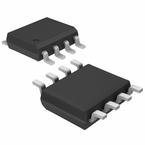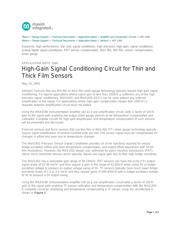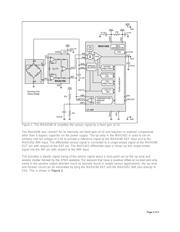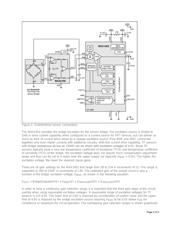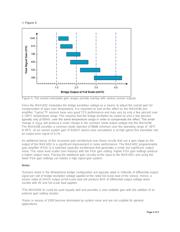下载

Maxim > Design Support > Technical Documents > Application Notes > Amplifier and Comparator Circuits > APP 1069
Maxim > Design Support > Technical Documents > Application Notes > Sensors > APP 1069
Keywords: high performance, low cost, signal conditioner, high precision, high gain, signal conditioner,
analog digital signal conditioner, PRT sensor compensation, thick film, thin film, sensor compensation,
strain gauge
APPLICATION NOTE 1069
High-Gain Signal Conditioning Circuit for Thin and
Thick Film Sensors
May 15, 2002
Abstract: Sensors that use thin-film or thick-film strain gauge technology typically require high-gain signal
conditioning. For typical applications where signal gain of less than 250V/V is sufficient, any of the high
precision signal conditioners, MAX1452, and MAX1455 ASICs can be used without any external
amplification of the signal. For applications where high-gain compensation (larger than 250V/V) is
required, external amplification circuit must me added.
Using the MAX4196 instrumentation amplifier (IA) as a pre-amplification circuit, adds a factor of 10V/V
gain to the signal path enabling low output strain gauge sensors to be temperature compensated and
calibrated. Complete circuits for high-gain amplification and temperature compensation of such sensors
will be presented and discussed.
Pressure sensors and force sensors that use thin-film or thick-film (TF) strain gauge technology typically
require signal amplification of several hundred volts per volt. The sensor signal must be compensated for
changes in offset and span due to temperature changes.
The MAX1452 Precision Sensor Signal Conditioner provides all of the functions required for sensor
bridge excitation (offset and span temperature compensation, and output offset adjustment with 16-bit
trim resolutions). However, the MAX1452 design was optimized for piezo-resistive transducers (PRT),
silicon micro-machined devices which typically require low signal gain due to their high bridge sensitivity.
The MAX1452 has a selectable gain range of 39-234V/V. PRT sensors can have full-scale (FS) output
signal levels of 20-40 mV/V¹ and thus require a gain in the range of 42-83V/V when using 3V of bridge
excitation voltage to produce an output voltage swing of 5V. TF sensors typically have much lower bridge
sensitivity levels of 1.5 to 2.5 mV/V and thus require gains of 360-830V/V with a bridge excitation voltage
of 4V to produce a 5V output swing.
Using the MAX4196 instrumentation amplifier (IA) as a pre-amplification circuit adds a factor of 10V/V
gain to the signal path enabling TF sensor calibration and temperature compensation with the MAX1452.
A complete circuit for amplifying and temperature compensating a TF sensor using this architecture is
shown in Figure 1.
Page 1 of 5

